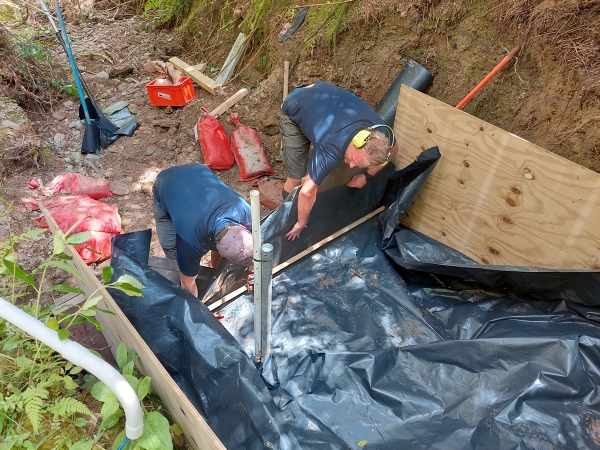NIWA is part of an international team of researchers contributing to the MBIE-funded Forest Flows programme. Forest Flows is a five-year research programme, led by Scion, looking at how we can create and maintain climate-resilient landscapes to provide beneficial outcomes for all New Zealanders.
This research primarily aims to better quantify water movement and storage in planted forest catchments, as well as quantify carbon capture through tree growth, and improve our understanding of nutrient cycling in these environments. It ultimately aims to answer three main questions: Where is the water? Where is it going? And who gets to use it?
NIWA’s role in the project has been to install and maintain meteorological and hydrological equipment, and to provide hydrological science expertise. Installations included weather stations, streamflow monitoring systems, lysimeters, wells, throughfall gauges, and rainfall chemistry monitoring equipment. These installations were carried out during 2020 and 2021 at five catchments that provide a rainfall gradient. These sites are remote, spread from Te Oneroa-a-Tōhe in the far north of Northland, to Māwhera on the South Island’s West Coast. Real-time data from these stations and from sensors operated by Scion, and remote sensing data from the University of Auckland and XERRA together provide a world-leading picture of the hydrological processes occurring within planted forests.
A key part of Forest Flows research is to understand how water moves through forested catchments during and after rainfall events that range from light rainfall to heavy storms. The importance of this work has been highlighted by the impact of floods in the North Island of New Zealand during the extreme rainfall events in January and February in 2023. Two of our research catchments – Mahurangi Forest in Auckland Region and Titoki Forest in the Tararua District – were directly impacted by these extreme events.
The intensive data collected by NIWA and Scion provides detailed insights about how water moved through these catchments during each storm. NIWA and Scion are currently analysing these data to understand how planted forests modify the hydrological response of these landscapes during flood events.
NIWA technicians visit these sites fortnightly or monthly to check equipment and collect samples. NIWA scientists provide surface and groundwater hydrological modelling products to the wider research group. For example, Hydrologist James Griffiths and Climate Research Scientist John-Mark Woolley are improving characterisation of hydrological pathways through test catchments using techniques such as ground penetrating radar, piezometers and deep wells. Data derived from these measurements will improve hydrological modelling. Hydrological modeller Jing Yang is leading development of groundwater models for test catchments.
NIWA project manager Bruce Dudley is leading research on water transit times through soils and groundwater, and the age and depth of water used by trees. Results from this research will shed light on the resilience of New Zealand’s planted forests to floods and drought, the likely impact of climate change on water export from forests, as well as fundamental hydrological processes.
For more visit: Scion, Forest Flows research programme.


